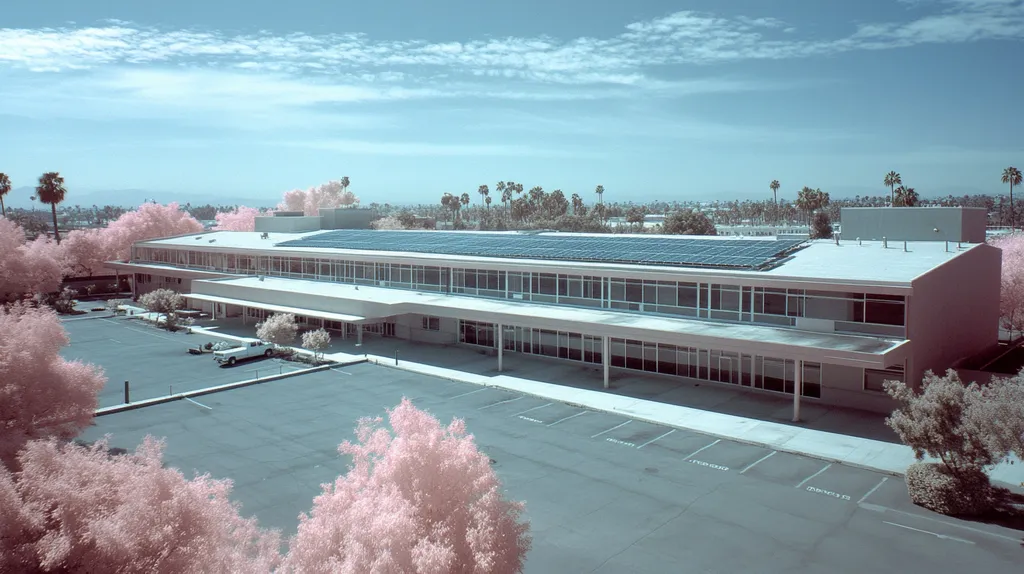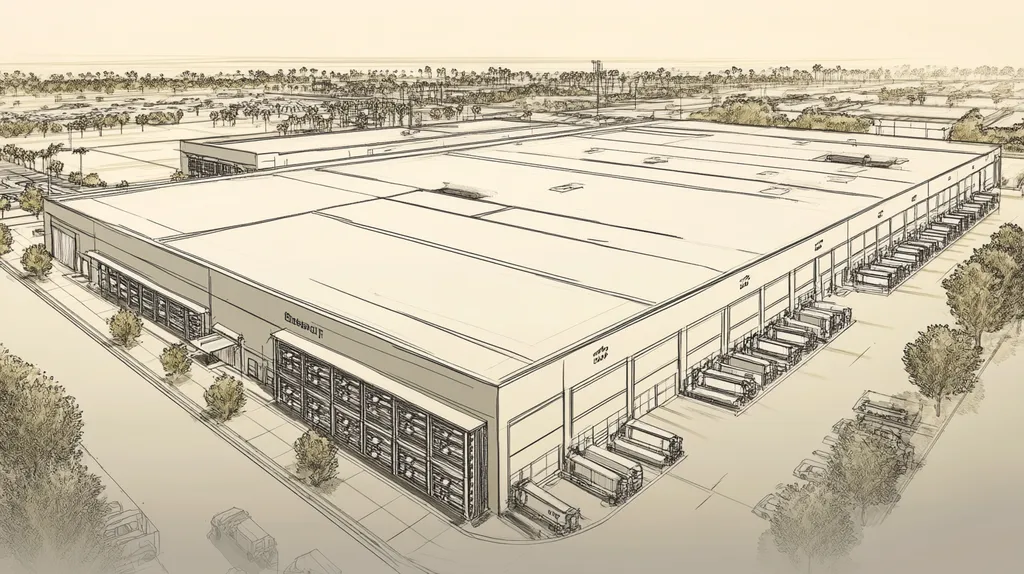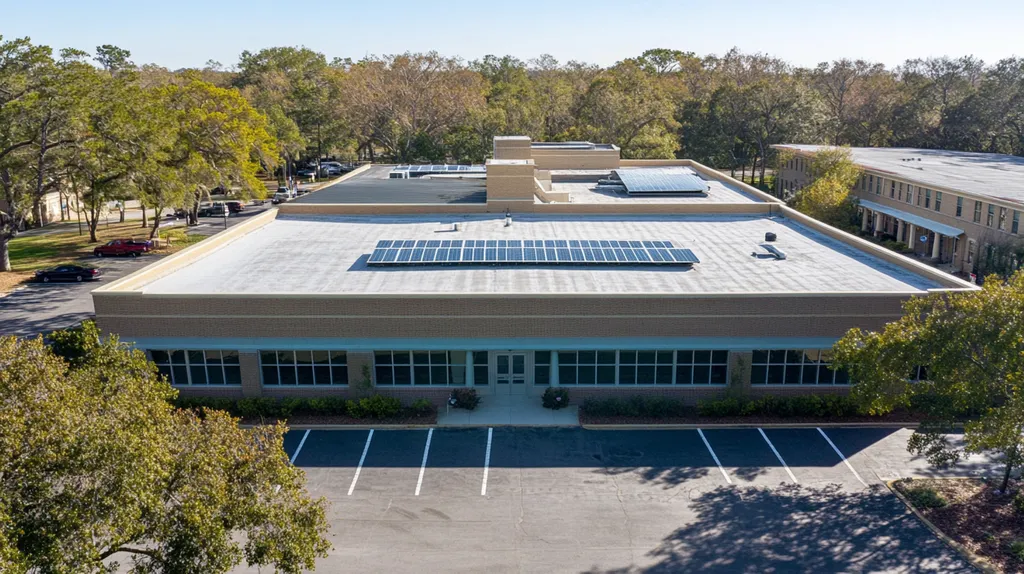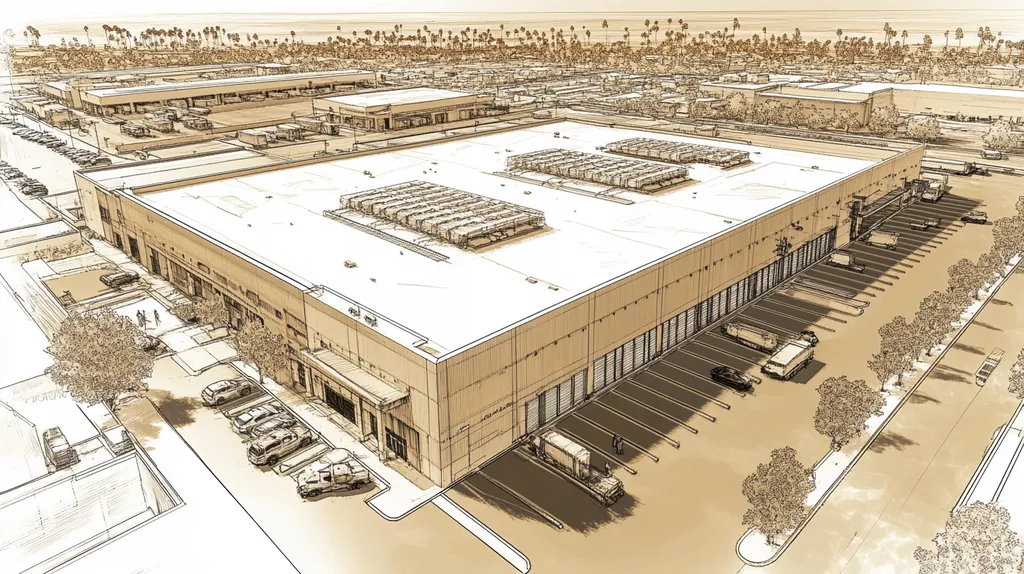In the high-stakes world of commercial roofing, choosing the wrong insulation type can lead to permit denials, skyrocketing energy costs, and premature roof failure. Studies show that up to 40% of commercial buildings have inadequate or improperly specified insulation, resulting in thousands of dollars in unnecessary expenses each year.
From misunderstood R-values to climate compatibility issues, the maze of insulation options leaves many property owners vulnerable to costly mistakes. Understanding these critical distinctions isn’t just about comfort—it’s about protecting investments and ensuring regulatory compliance.
This comprehensive guide separates insulation facts from fiction, equipping facility managers with the knowledge to make informed decisions that impact both immediate permits and long-term building performance.
SECTION 1: COMMON MISCONCEPTIONS
Misconceptions about insulation can create significant challenges for commercial roofing projects, often leading to costly oversights. Property owners and facility managers frequently misinterpret the value of R-value, overlook the need for climate-specific insulation, and assume that all insulation materials perform equally well. These misunderstandings can impact energy efficiency, regulatory compliance, and the long-term durability of the roof. Gaining clarity on these misconceptions is crucial for making informed and effective decisions in roofing.
Misunderstanding R-Value Significance
The R-value is an essential measurement of insulation efficiency, yet many lack a comprehensive understanding of what it really means. A common assumption is that a higher R-value automatically signifies better insulation performance. While this can be true, it’s important to consider additional factors such as the local climate and the specific design of the roof.
For example, in warmer climates, too much insulation can trap heat, ultimately stressing cooling systems. Conversely, in colder regions, failing to meet the appropriate R-value requirements can lead to considerable heat loss, driving up energy costs. Knowing the right R-value for a building’s location is essential for maximizing energy savings and ensuring comfort for occupants.
This lack of clarity can also lead to violations of local building codes, resulting in fines or mandatory retrofits that add to project costs. A solid grasp of R-values helps ensure that roofs not only comply with but also exceed regulatory standards efficiently.
Thus, assessing R-values contextually—taking climate and building purpose into account—becomes crucial for making effective insulation choices.
Ignoring Climate-Specific Insulation
Another critical misconception is the idea that insulation types are one-size-fits-all solutions. Many property owners select insulation without considering how different climates affect performance, which often leads to wasted energy and money.
Take mineral wool insulation; it excels in fire resistance but might not deliver optimal thermal performance in hot, humid environments. Conversely, foam board insulation shines in cold climates but can create moisture issues if misapplied in wetter locations.
This failure to choose climate-appropriate insulation can lead to soaring energy expenses and a shorter lifespan for the roof, arising from moisture problems or thermal inefficiencies. Therefore, understanding how insulation compatibility varies with climate conditions is vital for achieving optimal performance and prolonging roof life.
Reaching out to local professionals can provide invaluable insights into which insulation types will yield the best outcomes, tailored to specific environmental factors.
Believing All Insulations Are Equal
A widespread myth in the roofing world is that all insulation materials are created equally. In reality, the characteristics of different materials can dramatically influence their performance and suitability for commercial roofing applications.
For instance, fiberglass insulation is often favored for its cost-effectiveness, yet it doesn’t provide the same moisture resistance as spray foam insulation, potentially leading to mold or structural damage if not used with caution.
Choosing insulation without fully understanding the distinct properties of each material can compromise energy efficiency and elevate repair risks. It’s essential to weigh the advantages and disadvantages of each insulation type according to the specific demands of the project.
Consequently, property owners should prioritize well-informed choices rather than relying on generalized assumptions about insulation. Consulting with the right professionals can help illuminate the unique benefits different insulation types offer, ensuring they align with specific roofing requirements.
SECTION 2: PRACTICAL IMPLICATIONS
The choice of insulation type has a profound impact on commercial roofing, directly affecting energy efficiency, roof longevity, and compliance with ever-changing building codes. With energy costs on the rise, property owners are grappling with increasing operational expenses. Did you know that according to the U.S. Department of Energy, poor insulation can lead to a staggering 30% energy loss in commercial buildings? Recognizing these implications empowers stakeholders to make informed decisions that not only trim expenses but also boost the overall performance of their buildings.
Impact on Energy Efficiency
The insulation type chosen for a commercial roof significantly affects energy efficiency. For example, materials like spray foam insulation provide much higher R-values than traditional fiberglass, delivering superior thermal resistance.
This enhanced insulation prevents energy seepage, significantly cutting down heating and cooling demands. Consequently, buildings that prioritize energy efficiency can see savings of up to 20% on their utility bills each year.
Moreover, selecting the right insulation creates a comfortable indoor climate, which can boost employee productivity. In industries where comfort is key—like healthcare or tech—optimized energy efficiency should remain a top priority.
In essence, savvy insulation choices contribute not just to sustainability but also lead to a healthier bottom line for businesses.
Effects on Roof Longevity
Picking the right insulation type can markedly extend the lifespan of a commercial roof. Take rigid board insulation; it often outpaces traditional batt insulation in durability by providing a robust barrier against moisture.
Moisture intrusion is a notorious enemy, leading to mold and structural damage that can severely cut roof longevity. With appropriate insulation, roofs can easily last 20 years or more, minimizing the frequency of costly replacements.
This kind of longevity translates into lower maintenance costs and an overall increase in property value. Property managers who commit to high-quality insulation often experience fewer unexpected failures and disruptions.
As climate change continues to alter weather patterns, resilient insulation becomes even more crucial in safeguarding roofs against harsh environmental impacts, ensuring that roofs endure over time.
Compliance with Building Codes
Insulation selections have direct implications for adhering to local building codes, which are continuously evolving to optimize energy efficiency. Many municipalities enforce strict insulation performance standards to help mitigate environmental impacts.
For instance, leveraging advanced insulation materials can ensure compliance with LEED certification guidelines, a significant advantage for attracting environmentally conscious tenants or investors.
Buildings that fall short of these codes risk facing fines, costly retrofits, or even project delays. Staying up to date on these regulations is crucial for property owners to avoid penalties and any potential legal repercussions.
Thus, grasping the complexities surrounding insulation types and related compliance is vital for preserving investments and maintaining operational integrity over the long haul.
SECTION 3: COST OF MISINFORMATION
Misinformation about insulation can lead to serious financial setbacks for commercial property owners. Choosing the wrong insulation can cause energy costs to skyrocket, especially during peak heating and cooling seasons. In fact, studies show that buildings with inadequate insulation could rack up energy bills that are up to 30% higher than their well-insulated counterparts. Such missteps can really strain budgets and affect a business’s bottom line.
Increased Energy Consumption
When property owners rely on incorrect information about insulation types, energy efficiency takes a serious hit. For instance, less effective insulation can allow heat to escape in the winter and seep in during the summer. This mismanagement compels HVAC systems to work overtime, leading to swollen energy bills and unnecessary wear on equipment.
Picture a facility owner who opted for budget-friendly insulation without confirming its R-value. This choice can lead to energy expenses that significantly exceed industry norms. As a result, exaggerated costs can ripple through the organization, affecting operational budgets and future financial strategies.
Moreover, the long-term costs associated with poor insulation often eclipse any initial savings. This disparity can pose a threat to the business’s profitability, emphasizing the need for diligent research and professional guidance when selecting roofing insulation.
Higher energy consumption stemming from misinformation directly impacts competitiveness and overall financial health. As operational expenses climb, businesses may find themselves struggling to stay afloat, facing the grim prospect of losses or budget cuts.
Premature Roof Replacement
The choice of insulation type is pivotal in determining the lifespan of a commercial roof. Misunderstanding how insulation affects roof integrity can lead to early failures. For example, improper insulation can trap moisture, leading to deterioration and catastrophic damage that shortens a roof’s lifespan.
Consider a commercial facility that has to replace its roof within a decade due to critical insulation miscalculations; the financial burden is substantial. Costs don’t just include new roofing materials—there are labor expenses and potential disruptions to business operations to consider. Hence, the financial implications extend well beyond the initial investment in insulation.
Premature replacements can also tarnish a company’s reputation and disrupt operations. Frequent closures or relocations stemming from roofing issues can erode client trust and damage market standing. A sound insulation decision made upfront could prevent such costly interruptions.
Ultimately, making informed insulation choices not only secures the roof’s integrity but also fosters long-term savings. Investing in the right insulation can prevent unnecessary replacements and enhance the overall performance of the building.
Non-Compliance Fines and Penalties
Neglecting established building codes concerning insulation can generate significant regulatory challenges for property owners. Many code violations stem from a lack of understanding about insulation standards, leading to fines that can soar into the thousands. Facilities failing to meet energy efficiency regulations risk unexpected inspections and penalties.
For instance, a commercial building that doesn’t align with energy efficiency requirements might face intense scrutiny during routine audits. These inspections scrutinize insulation quality and could necessitate costly upgrades to ensure compliance. Even a minor information gap can evolve into substantial financial liabilities.
Compliance challenges can also strain relationships with local governments and regulatory agencies. Affected permit applications may experience delays or outright denials, lengthening project timelines. If a facility develops a reputation for non-compliance, potential clients might opt for competitors instead.
In the end, choosing the correct insulation has far-reaching implications on financial outcomes and regulatory conformance. A well-informed approach not only shields property owners from fines but also maintains a positive reputation within the industry and the community.
SECTION 4: REALITY CHECK
Choosing the right insulation for commercial roofing is not just a technical decision; it’s a pivotal factor that can dramatically influence a property’s success. The stakes are high! Property owners often grapple with the repercussions of improper insulation, such as spiraling energy costs and trouble meeting local building codes. This section clarifies the most common types of insulation and outlines how these choices can shape the overall performance and compliance of a roofing system.
Understanding Insulation Types
The insulation selected for a commercial roof carries significant weight in terms of energy efficiency and adherence to building regulations. Each insulation material presents its unique set of properties and challenges, making it essential for property owners to master these differences. Without a solid understanding, they risk running into costly mistakes during installation.
Insulation serves as a critical player in maintaining a building’s internal temperature while also contributing to its overall structural integrity. Making a poor choice can lead to moisture problems and roof deterioration, resulting in increased utility bills. Therefore, strategic decision-making goes beyond merely crunching numbers; it’s about protecting the entire roofing system!
In the commercial domain, popular insulation types like polyisocyanurate, expanded polystyrene, and extruded polystyrene have specific strengths and weaknesses. Knowing their R-values, moisture resistance, and compatibility with varying roofing systems is crucial for any successful project. This foundational knowledge fuels informed decision-making.
Ultimately, selecting the right insulation not only enhances energy performance and reduces operational costs but also smoothens the path to obtaining permits. Armed with this knowledge, property owners can navigate the complex world of commercial roofing with confidence.
Role of Polyiso, EPS, and XPS
Each insulation type—Polyisocyanurate (PIR), Expanded Polystyrene (EPS), and Extruded Polystyrene (XPS)—holds a crucial spot in the commercial roofing toolkit. Polyiso insulation, renowned for its robust insulating values, significantly cuts energy costs thanks to its superior thermal resistance and moisture-proof properties, making it an ideal choice for many flat and low-slope roofs.
Meanwhile, EPS insulation is favored for its affordability and versatility. Though it may not rival the high R-values of polyiso, its lightweight structure and excellent thermal resistance make it a dependable option for various roofing designs.
XPS insulation stands out for its outstanding moisture resistance, particularly in applications where exposure to water is a concern. Although its R-values are a bit lower than polyiso’s, its durability in demanding waterproofing situations makes it a reliable choice.
Choosing between these insulation types often depends on the project’s specific needs and environmental conditions. Therefore, property owners must carefully analyze the unique benefits each type brings to the table for the most effective roofing solution.
Spray Foam and Mineral Wool Facts
Spray foam insulation has become increasingly popular in commercial roofing, celebrated for its remarkable air sealing abilities and high R-values. Once applied, it adapts to any surface, effectively minimizing thermal bridging. This airtight seal not only boosts energy efficiency but can lead to substantial cost savings on utility bills, provided it’s installed correctly to meet code requirements.
On the flip side, mineral wool insulation is known for its exceptional fire resistance and sound-dampening attributes. Although its R-values may not match those of spray foam, its fire performance makes it invaluable for certain high-temperature applications. Understanding when and where to utilize mineral wool can greatly influence decision-making, especially in fire-prone locales.
Every insulation type carries its own set of benefits and drawbacks. For instance, while applying spray foam can be labor-intensive, mineral wool might be easier to handle during installation. Evaluating these practicalities is absolutely essential for property owners as they navigate the often intricate permit processes.
Ultimately, keeping informed about these insulation options empowers decision-makers to optimize their roofing systems. A well-considered choice not only meets regulatory requirements but also enhances overall building performance, setting the stage for a robust and efficient roof for years to come.
SECTION 5: EVIDENCE-BASED ALTERNATIVES
When it comes to insulation for commercial roofing, making the right decision is more than a matter of comfort—it’s crucial for energy efficiency and securing necessary permits. Inadequate insulation can lead to a staggering 30% loss in energy savings, significantly increasing operational costs. Property owners must carefully consider their options, as the right insulation choice can optimize building performance while adhering to local regulations. This section breaks down vital aspects to contemplate when selecting insulation materials, understanding building codes, and embracing sustainability.
Selecting the Right Insulation Material
The choice of insulation material is a key factor in determining the effectiveness of a commercial roof. Using subpar or non-compliant materials can not only diminish energy efficiency but also attract penalties down the road. For example, spray foam insulation tends to deliver impressive R-values compared to traditional options, providing enhanced climate control without breaking the bank.
This choice drains more than just initial costs. While materials like polyisocyanurate offer exceptional insulation performance, they often come with more rigorous fire safety requirements. Understanding these nuances can lead to savings not only during installation but also in the long run.
Geographical factors also play a significant role in insulation selection. In hot climates, reflective insulation types can drastically reduce cooling costs, while rigid board insulation may be more suitable for regions that battle frigid temperatures.
In summary, taking the time to evaluate insulation materials for performance, cost-effectiveness, and compliance is crucial for maximizing the longevity and efficiency of any roofing system.
Considering Local Building Codes
Local building codes wield considerable influence over insulation choices in commercial roofing, with many jurisdictions enforcing specific regulations to ensure both safety and energy efficiency. Ignoring these codes can result in significant delays and hefty fines.
For instance, certain areas have established minimum R-values for insulation types used in commercial roofs. Familiarizing oneself with these requirements prior to starting the installation process can streamline obtaining permits and avoid unexpected headaches.
Engaging with local building authorities or consulting a roofing professional knowledgeable about current regulations can be invaluable. Keeping up with any changes ensures that choices align with the latest standards.
Using compliant materials not only fulfills legal obligations but can also elevate the building’s market value. Investments made in adhering to code requirements offer substantial long-term advantages.
Environmental and Sustainability Factors
Sustainability is increasingly in the spotlight within the commercial roofing realm. Property owners are now often called to select insulation materials that minimize environmental impact while reaping energy efficiency benefits. Insulation significantly influences a building’s energy profile, directly affecting operational carbon emissions.
Opting for eco-friendly insulation options—such as mineral wool or recycled content materials—not only enhances energy efficiency but does good for the planet. Studies suggest that buildings with sustainable roofing can achieve energy performance improvements of up to 20%.
Additionally, many regions offer incentives for incorporating sustainable materials into roofing systems, which can greatly ease installation expenses and foster long-term energy savings.
Ultimately, choosing sustainable insulation methods meets the demands of modern consumers and regulatory expectations while benefiting the environment, making it a win-win for all involved.
SECTION 6: TEST AND VERIFY
When it comes to commercial roofing insulation, the stakes couldn’t be higher. Inadequate testing can lead not only to costly energy inefficiencies but also to severe structural issues. Research shows that nearly 30% of commercial roofs fail prematurely due to moisture intrusion and poor thermal performance. Conducting thorough tests is essential to ensure compliance and safeguard investments. This section highlights three critical testing areas: thermal performance assessments, moisture damage inspections, and compliance verification with the International Energy Conservation Code (IECC).
Conducting Thermal Performance Tests
Thermal performance tests are crucial for deciphering how well insulation truly functions under different conditions. These assessments pinpoint energy loss areas, empowering property owners to make informed choices. Advanced techniques like infrared thermography and heat flux measurements can uncover insulation defects that are otherwise hidden from view.
Routine thermal imaging scans identify specific areas where heat escapes or enters, which can lead to substantial energy savings when rectified. Conducting these tests during extreme weather conditions provides insights into real-world insulation performance. By confirming that insulation adheres to thermal performance standards, buildings can achieve lower energy costs and offer more comfort to occupants.
Property owners are advised to collaborate with certified professionals for accurate testing. This partnership not only ensures precise results but also reinforces the credibility of operational strategies. Comprehensive documentation from these tests can demonstrate compliance and performance metrics to stakeholders, thereby enhancing trust and transparency.
Additionally, ongoing monitoring of insulation effectiveness establishes a proactive maintenance approach, enabling property managers to address any issues before they escalate.
Inspecting for Moisture Damage
Moisture damage silently threatens the integrity of commercial roofs, significantly undermining insulation performance and leading to potential structural failures. Routine inspections utilizing moisture meters and visual assessments can reveal leaks before they grow into expensive repairs.
Property managers must recognize that sources of moisture intrusion can arise from various issues, such as deteriorated seams in roofing membranes or inadequate drainage. A thorough moisture inspection involves identifying signs like surface blisters or mold growth, indicating deeper underlying concerns.
Post-storm assessments are vital for swiftly recognizing damage. Delays in inspections after severe weather can allow prolonged exposure to moisture, exacerbating roofing issues and resulting in costly repairs. A systematic inspection regime supports the integrity of insulation and lengthens the roof’s lifespan.
Engaging seasoned professionals for moisture inspections maximizes the detection and resolution of potential issues. Teams equipped with advanced tools ensure comprehensive evaluations, safeguarding the roof against hidden damages.
Verifying Compliance with IECC Standards
Compliance with the IECC is not merely a regulatory checkbox; it’s essential for maximizing a building’s energy efficiency. The IECC outlines specific standards that dictate the types of insulation and installation practices required in commercial roofing. Understanding these standards and their relevance to each project is crucial for property owners.
Regular audits are necessary to affirm compliance, which entails reviewing insulation R-values against IECC requirements that differ by climate zone. Non-compliance may lead to financial penalties, while adherence typically results in reduced operational expenses and better overall building performance.
In many cases, hiring an experienced energy consultant can simplify the compliance verification process. These experts can help navigate the complexities of various insulation materials and their contributions to overall energy efficiency.
Furthermore, proper documentation of compliance not only ensures adherence to legal standards but can also enhance the property’s appeal in the market. Buildings that meet or exceed IECC standards tend to attract more interest from potential buyers and tenants, making compliance a win-win for property owners.
The Bottom Line
With up to 40% of commercial buildings using inadequate insulation and energy costs continuing to rise, choosing the right insulation type has never been more critical for permit approval and operational success.
The consequences of poor insulation choices extend far beyond denied permits, potentially resulting in hundreds of thousands in unnecessary energy costs and premature roof replacement.
Property owners must shift from viewing insulation as a mere checkbox to recognizing it as a strategic investment that impacts code compliance, energy efficiency, and structural integrity.
By understanding the distinct properties of different insulation materials and their relationship to local building codes, facility managers can make informed decisions that protect their investments while ensuring regulatory compliance.
The future of commercial roofing depends on getting these crucial insulation decisions right the first time.
FREQUENTLY ASKED QUESTIONS
Q. What common misconceptions exist about commercial roof insulation?
A. Misunderstandings about insulation can lead to expensive energy inefficiencies and compliance issues. Many assume that a higher R-value automatically means better insulation without realizing that climate and specific application matter too. Selecting the right insulation requires understanding its role in energy efficiency, regulatory standards, and the building’s local environment.
Q. How does insulation type impact commercial roof energy efficiency?
A. The insulation type chosen can significantly boost energy efficiency and lower utility bills. For example, spray foam insulation is known to provide better thermal resistance compared to standard fiberglass. Improved insulation reduces heating and cooling demands, leading to savings and a more comfortable environment for occupants.
Q. What financial risks are associated with misinformation on insulation for industrial roofs?
A. Poor insulation choices due to misinformation can lead to soaring energy bills and premature roof replacements. Inaccurate selections can result in 30% higher energy costs and the burden of unexpected repairs. These financial setbacks may strain budgets and affect overall business profitability in the long run.
Q. Why is choosing the right insulation essential for complying with building codes?
A. Complying with local building codes is crucial, as they dictate insulation performance standards to ensure safety and energy efficiency. Failing to meet these codes can result in fines and mandatory upgrades, hindering project timelines and increasing costs. Understanding building regulations helps optimize compliance and protect your investment.
Q. How can insulation affect the longevity of a commercial roof?
A. The right insulation choice can significantly extend the lifespan of a commercial roof. Proper insulation helps prevent moisture intrusion and structural damage, contributing to the durability of the roof. Inadequate insulation, on the other hand, can lead to costly repairs and premature replacements, negatively impacting overall property value.
Q. Why should I test insulation performance for my commercial roofing project?
A. Testing insulation performance ensures that it meets energy efficiency standards and minimizes potential structural issues. Conducting thermal performance assessments and moisture inspections can identify weaknesses, leading to future savings. Regular testing confirms compliance, enhances energy savings, and fortifies the long-term integrity of the roofing system.
Q. What alternatives exist for insulation in commercial roofing?
A. There are several evidence-based alternatives for commercial roofing insulation, including fiberglass, mineral wool, and spray foam. Understanding each option’s benefits, such as durability, fire resistance, and energy efficiency, is crucial for making a choice that balances cost-effectiveness and regulatory compliance while optimizing building performance.










